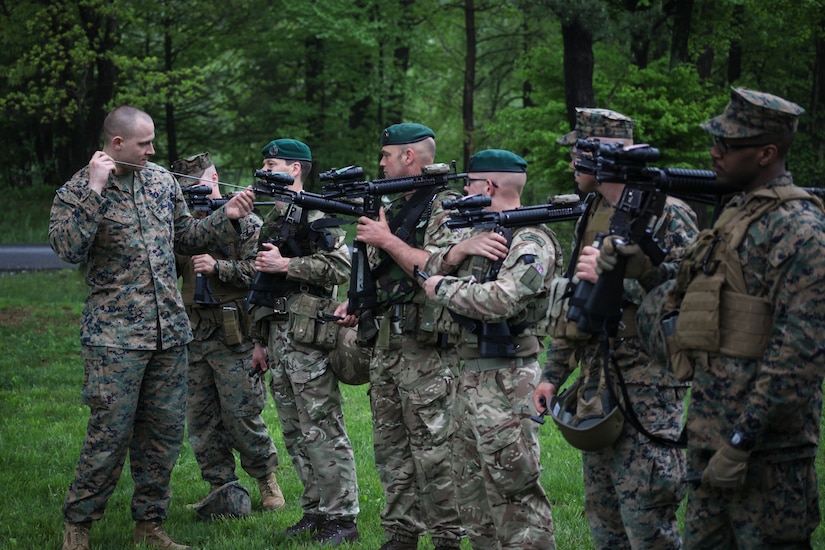By Marine Corps Sgt. Melanie A. Wolf, Marine Forces Reserve
FORT INDIANTOWN GAP, Pa. -- Marines with 6th Engineer
Support Battalion, 4th Marine Logistics Group, are partnering with British army
engineers from the 131 Commando Squadron during Exercise Red Dagger that began
here May 12.
The reserve Marines supporting this fifth iteration of
training are based out of five locations: Portland, Oregon; Battle Creek,
Michigan; Peoria, Illinois; Folsom, Pennsylvania; and Millington, Tennessee.
"Every year we alternate where the integrated training
between the Marines and commandos will take place," said Marine Corps Maj.
Timothy B. McGovney, company commander of Exercise Red Dagger, 6th ESB.
"This year happens to be at Fort Indiantown Gap.”
Ideal Training Environment
Fort Indiantown Gap is an ideal training environment as it
provides the Marines and British commandos a perfect area to enhance their
skills, officials said. This year’s exercise concludes May 25.
“We are really looking forward to making the most out of the
facilities the Marines have here in the United States and particularly the
built-up urban environment on Fort Indiantown Gap,” said British army 2nd Lt.
David A. Grant, support troop commander, 131 Commando Squadron Royal Engineers.
The U.S. Marines and British commandos have plans to conduct
combat pistol training, offensive and defensive military operations on
urbanized terrain, or MOUT, and a series of vertical and horizontal engineering
and welding projects.
The first half of the two-week exercise will consist of a
series of ranges and tactical instruction.
Rifle Marksmanship Training
“We will be teaching rifle marksmanship with the M16’s, M4’s
and M9’s,” McGovney said. “Tables five and six, which are short range
engagements, will be conducted both during the day and then again at night with
the night operations and night vision goggles.”
While integrating the Marines and British commandos into
four platoons, they will give all junior-ranking officers a chance to be
involved and lead the platoons.
“Two of the platoon commanders are Marine lieutenants,”
McGovney said. “The other two platoons will have British commando equivalents
as their platoon commanders.”
Even though the troops do not share the same procedures,
equipment and tactics, they are able to learn from each other’s knowledge.
"We are learning exactly how they would employ their
own weapons, under what conditions they may use their weapons, and how they
maintain dispersion in a tactical environment with the gear and equipment they
have,” McGovney said of his British counterparts.
Half of the training will provide opportunities for the
engineers and metal workers to practice their field craft.
Engineering Projects
“The second half of this exercise is the engineering
projects, where we will be putting up vertical siding construction pieces and
installing new flooring in an old World War II barracks,” McGovney explained.
“We also have plans for our heavy equipment operators to dig trenches at a
local range, to practice survivability positions within a tactical environment.
The British commandos said they appreciate the opportunity
to train with the Marines and they look forward to learning how to use the
Marines’ weapons, equipment, and tactics.
“This exercise will be a big skill exchange,” Grant said.
“It will create a wider appreciation of what each individual unit does and
enhance our skills.”
“These are our allies across the Atlantic and we want to be
able to go into theater with them and be able to operate, whether adjacently,
joint, or bilaterally,” McGovney said of his British partners. It’s important
to continue this integrated training in order to shoot, move and communicate
together. Both nations have different capabilities and equipment that we can
bring to the table to accomplish the same mission.”

No comments:
Post a Comment